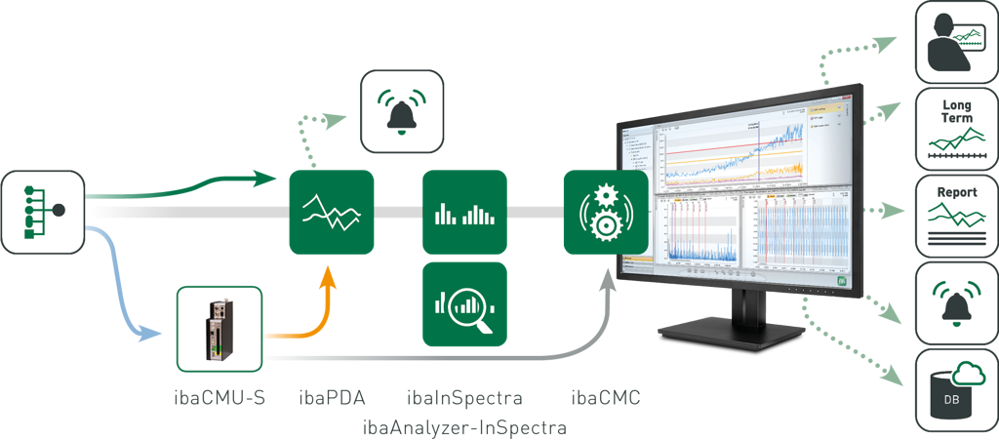Condition Monitoring

Condition Monitoring
Condition Monitoring Systems (CMS) use vibration measurement in combination with intelligent analysis procedures to detect wear and tear on mechanical components at an early stage. They lay the foundation to transition from preventative to predictive maintenance. Thus, mechanical components are optimally used over their real service life and the costs for unexpected downtimes and spare parts are reduced.
Business Benefits
- Detect anomalies from long-term machine trends
- Prevent false alarms
- Reduce downtimes
- Optimize planning of maintenance work
Optimum Planning of Maintenance Work
For reaching a maximum productivity, industrial plants need a high level of availability. Downtimes - especially unplanned ones - need to be prevented. Changes, due to wear and tear of the equipment, usually result in mechanical vibrations. By means of vibration measurement, Condition Monitoring Systems detect signs of wear at an early stage in the process and allow for optimum planning of maintenance work.
Vibrational Behavior in complex Plants
For simple components without considerable external influences on the vibrational behavior, wear can be predicted quite reliably by means of vibration measurement. In complex processes, the vibration behavior is influenced by a number of external factors such as changing loads in the process, or the processing of different materials. Only by simultaneous monitoring of all machines, processes, materials and quality data, the damages on machine parts can be detected reliably.
Hardware and Software for Condition Monitoring - perfectly matched
The Condition Monitoring solution by iba, with the Condition Monitoring Center ibaCMC and the Condition Monitoring Unit ibaCMU-S, offers powerful functions for monitoring wear on machines and process-induced vibrations, as well as the possibility to correlate the data with each other. The hardware - ibaCMU-S - has been specially developed for Condition Monitoring applications. It allows for on-site processing of vibration and process signals in order to determine characteristic values for damage levels.
Based on the iba modular system, up to 32 vibration signals can be processed. The interfacing to the process is done by the integrated ibaNet FO interface or via Ethernet TCP/IP. ibaCMU-S is configured using the Condition Monitoring Center -- ibaCMC -- by defining the single machine components.
Example configuration for Condition Monitoring

Brochures


